Qatar's Oxygen Park is the perfect antidote to the desert heat
A new park in Doha's Education City, especially designed by Aecom and inspired by the desert environment, offers an innovative natural space and a much needed ‘green lung' to the local community
Markus Elblaus - Photography
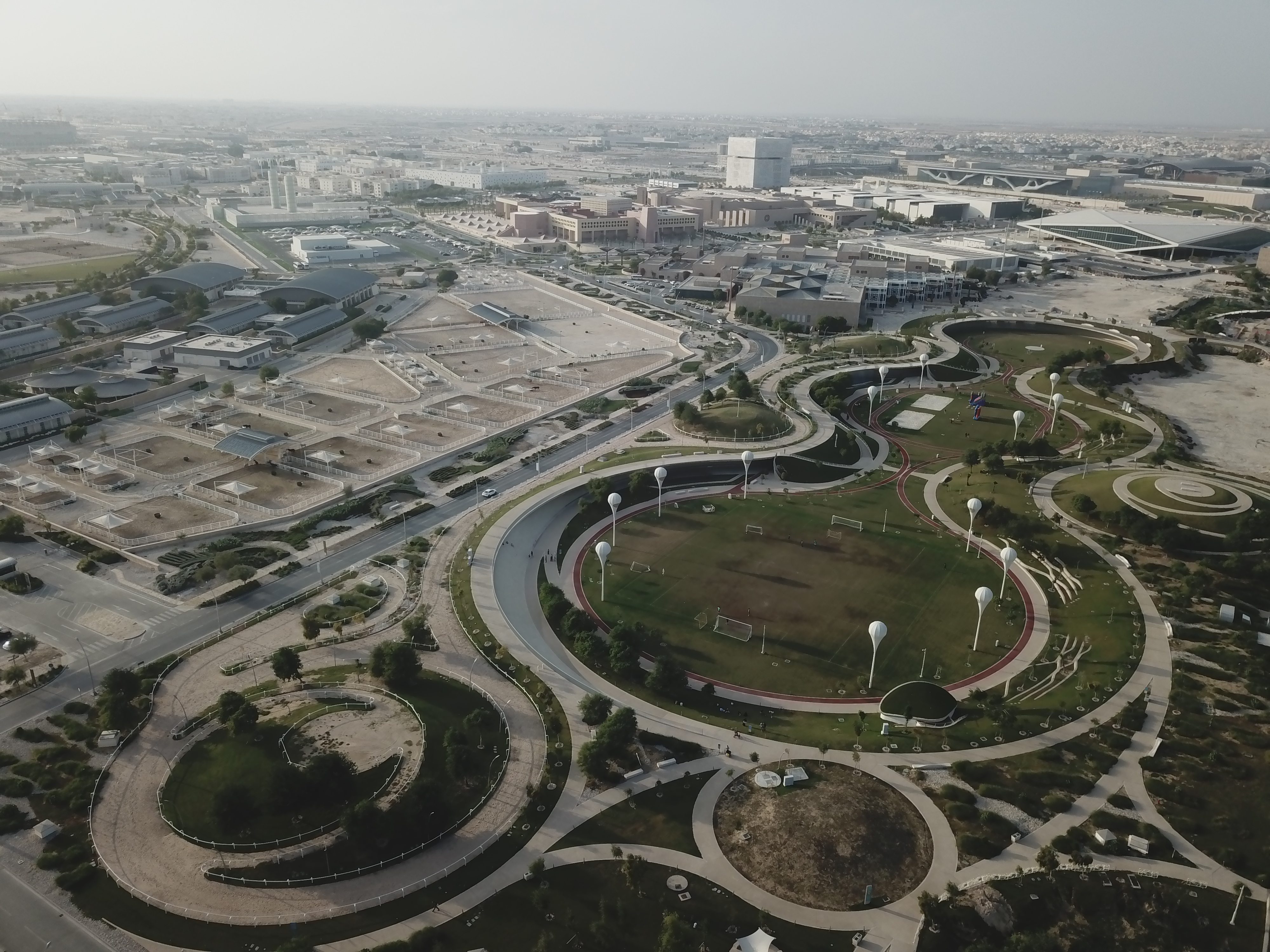
In the outskirts of Doha, nestled low, next to soaring landmark architecture such as OMA's National Library and Qatar Foundation Headquarters, sits a new green, open space. Designed by Aecom, Oxygen Park was conceived as an important 'green lung' for Education City, the Qatari capital's university and learning quarter.
Sitting in the heart of a campus with students from over 50 countries, the park was designed to not only provide an urban connection between different parts of the wider area, but also create a verdant landscape for people to walk, exercise and rest in.
Helping the health and wellbeing of its users and the local community were a key goal for the design team. Aecom responded by creating an area that unites provisions for different kinds of activities in a carefully composed whole. There's a track for running, and bespoke benches to rest, open areas and subterranean pitches to play and sheltered parts to hide from the region's intense summer sun. The park is a composition of series of sub-areas, open and closed, green and built.
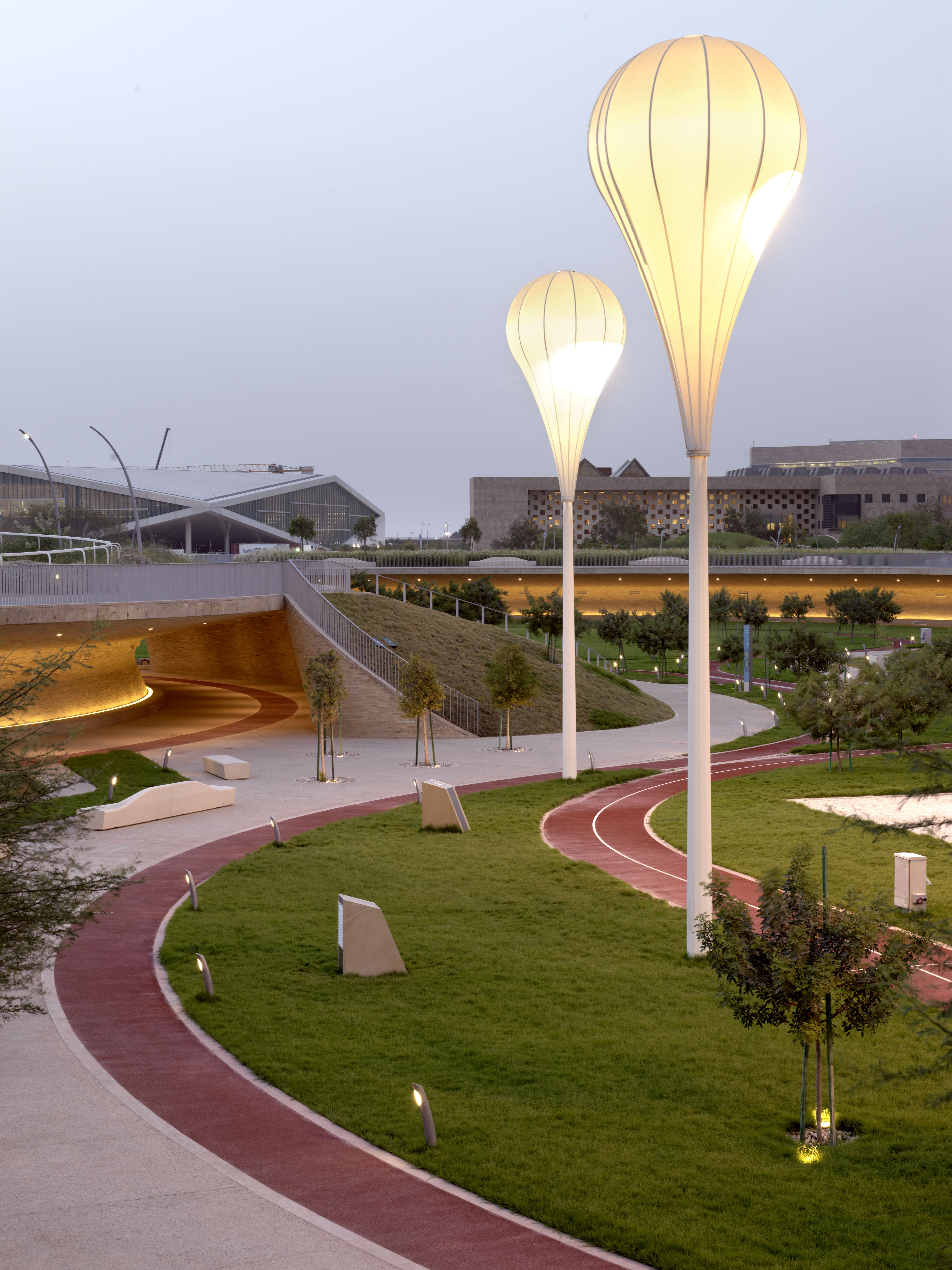
‘From a conceptual point of view, designing a park is not that different to a building,' explains Aecom creative director and architect Erik Behrens. ‘It starts with a programme and idea driving the logic of form and organization. Parks are inevitably outdoors, and they are always in a particular geography, they each have very different climates and temperatures and are bound to ecological processes.'
This, Behrens, acknowledges is also true for buildings, and research and open mind in both cases is key. ‘In the case of Oxygen Park, we spent over a week in the desert learning about the principles of dynamic land formations and the beauty of wind-eroded rocks. In combining this with the programmatic components and vegetation, the design of this park emerged,' he continues.
Looking to the Qatari natural landscape for clues was critical. ‘We drew our inspiration from the wind-eroded rocks and fluid land formations in Qatar,' says Behrens. ‘Oxygen Park is designed to convey a beautiful and fluid surface; its undulations enable it to flow effortlessly as ground, roof, wall, and ceiling.'
At the same time, a specially designed night time lighting scheme makes the park available after dark too, when temperatures are cooler.
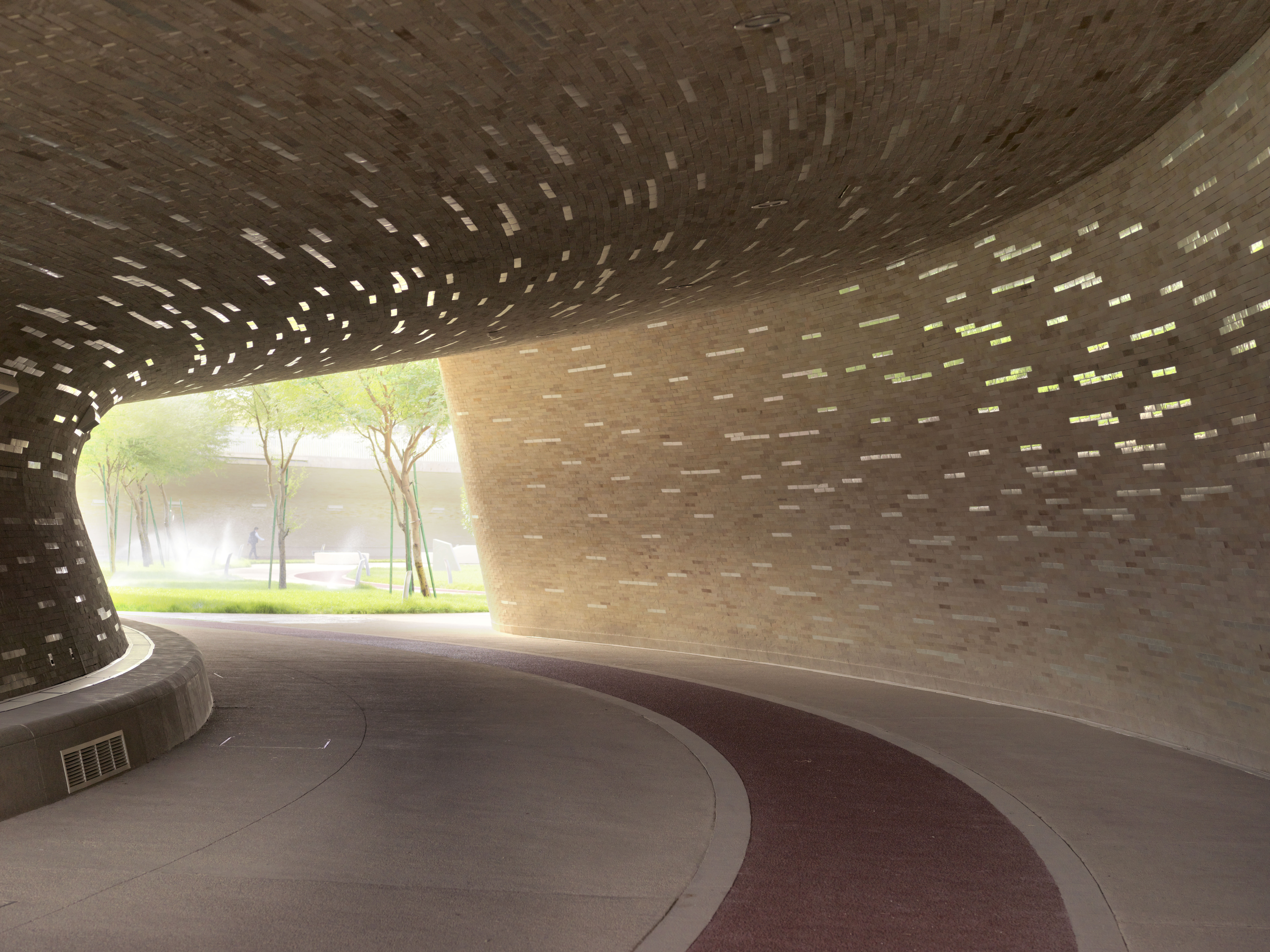


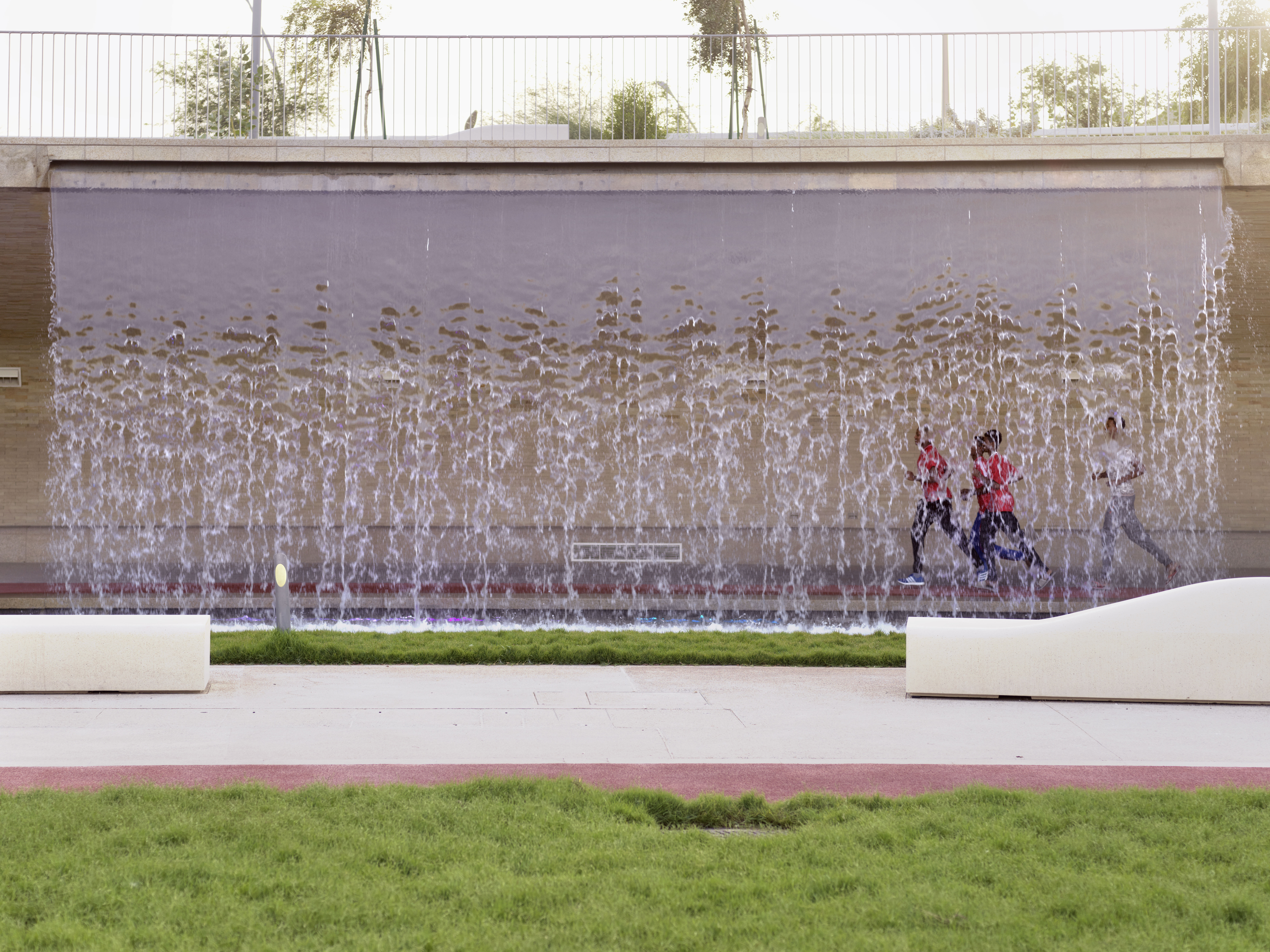
INFORMATION
Receive our daily digest of inspiration, escapism and design stories from around the world direct to your inbox.
Ellie Stathaki is the Architecture & Environment Director at Wallpaper*. She trained as an architect at the Aristotle University of Thessaloniki in Greece and studied architectural history at the Bartlett in London. Now an established journalist, she has been a member of the Wallpaper* team since 2006, visiting buildings across the globe and interviewing leading architects such as Tadao Ando and Rem Koolhaas. Ellie has also taken part in judging panels, moderated events, curated shows and contributed in books, such as The Contemporary House (Thames & Hudson, 2018), Glenn Sestig Architecture Diary (2020) and House London (2022).
- Markus Elblaus - PhotographyPhotographer
-
 In 2025, fashion retail had a renaissance. Here’s our favourite store designs of the year
In 2025, fashion retail had a renaissance. Here’s our favourite store designs of the year2025 was the year that fashion stores ceased to be just about fashion. Through a series of meticulously designed – and innovative – boutiques, brands invited customers to immerse themselves in their aesthetic worlds. Here are some of the best
-
 The Wallpaper* team’s travel highlights of the year
The Wallpaper* team’s travel highlights of the yearA year of travel distilled. Discover the destinations that inspired our editors on and off assignment
-
 The architecture of Mexico's RA! draws on cinematic qualities and emotion
The architecture of Mexico's RA! draws on cinematic qualities and emotionRA! was founded by Cristóbal Ramírez de Aguilar, Pedro Ramírez de Aguilar and Santiago Sierra, as a multifaceted architecture practice in Mexico City, mixing a cross-disciplinary approach and a constant exchange of ideas
-
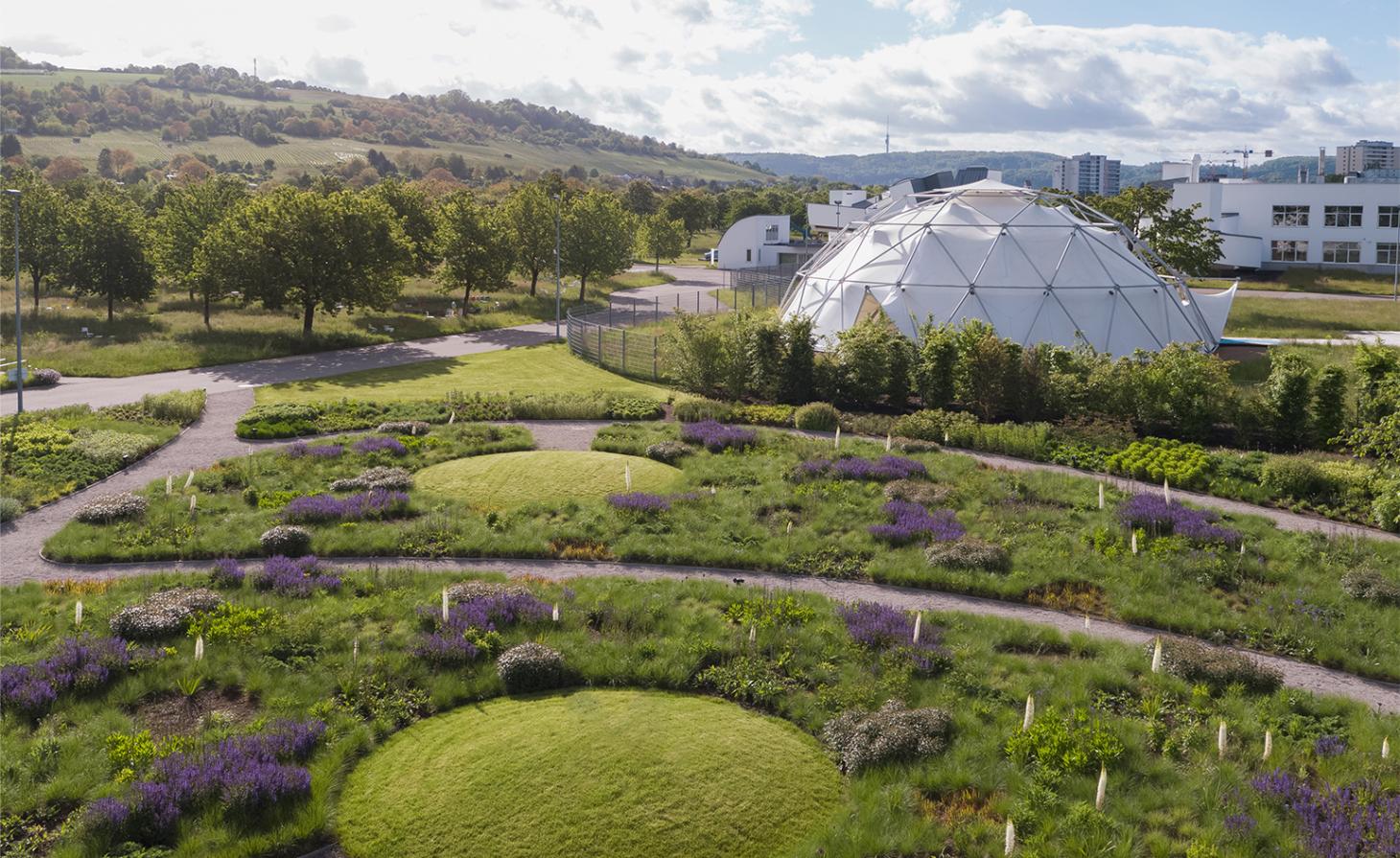 Piet Oudolf is the world’s meadow-garden master: tour his most soul-soothing outdoor spaces
Piet Oudolf is the world’s meadow-garden master: tour his most soul-soothing outdoor spacesPiet Oudolf is one of the most impactful contemporary masters of landscape and garden design; explore our ultimate guide to his work
-
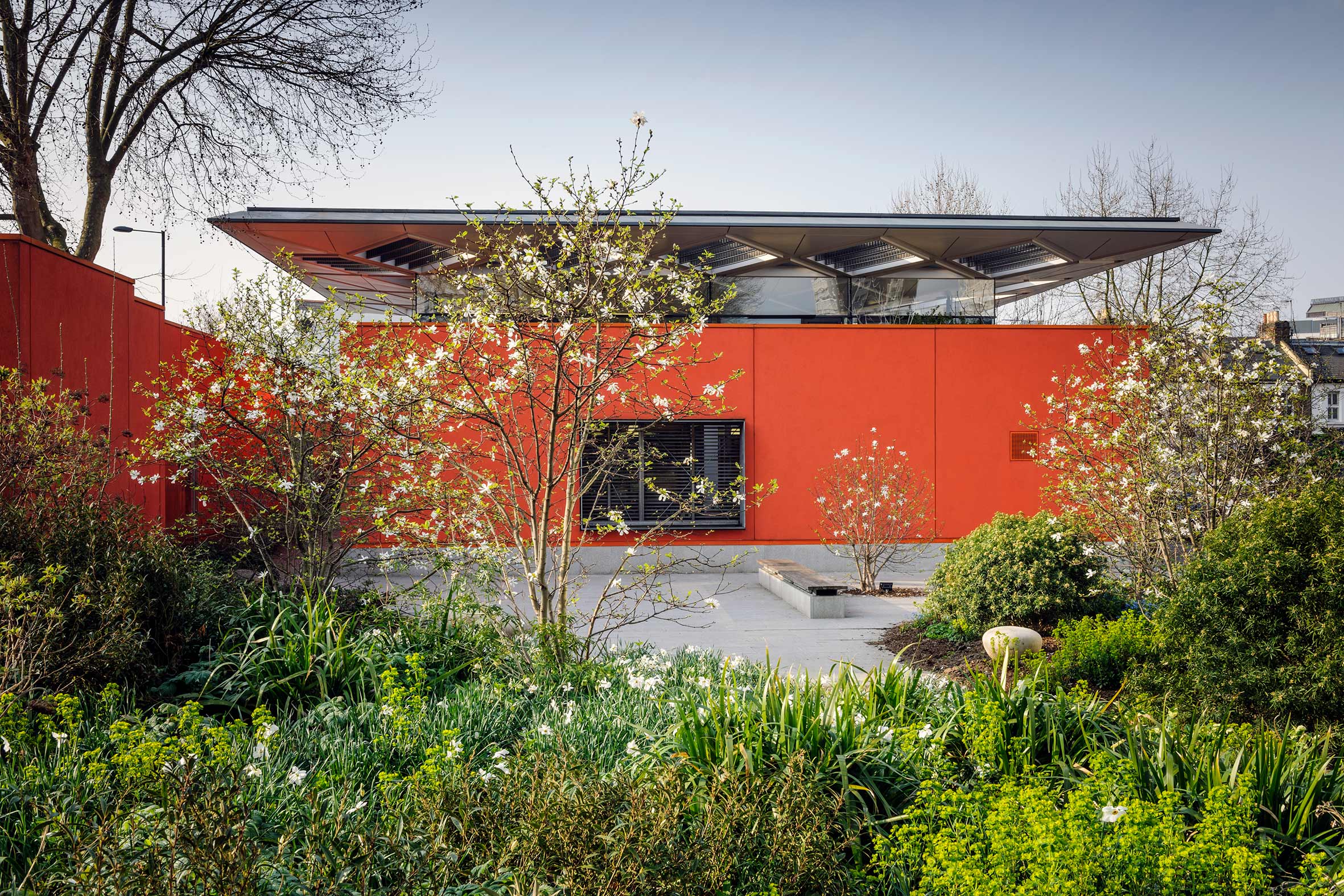 How Maggie’s is redefining cancer care through gardens designed for healing, soothing and liberating
How Maggie’s is redefining cancer care through gardens designed for healing, soothing and liberatingCancer support charity Maggie’s has worked with some of garden design’s most celebrated figures; as it turns 30 next year, advancing upon its goal of ‘30 centres by 30’, we look at the integral role Maggie’s gardens play in nurturing and supporting its users
-
 Honouring visionary landscape architect Kongjian Yu (1963-2025)
Honouring visionary landscape architect Kongjian Yu (1963-2025)Kongjian Yu, the renowned landscape architect and founder of Turenscape, has died; we honour the multi-award-winning creative’s life and work
-
 ‘Landscape architecture is the queen of science’: Emanuele Coccia in conversation with Bas Smets
‘Landscape architecture is the queen of science’: Emanuele Coccia in conversation with Bas SmetsItalian philosopher Emanuele Coccia meets Belgian landscape architect Bas Smets to discuss nature, cities and ‘biospheric thinking’
-
 Explore the landscape of the future with Bas Smets
Explore the landscape of the future with Bas SmetsLandscape architect Bas Smets on the art, philosophy and science of his pioneering approach: ‘a site is not in a state of “being”, but in a constant state of “becoming”’
-
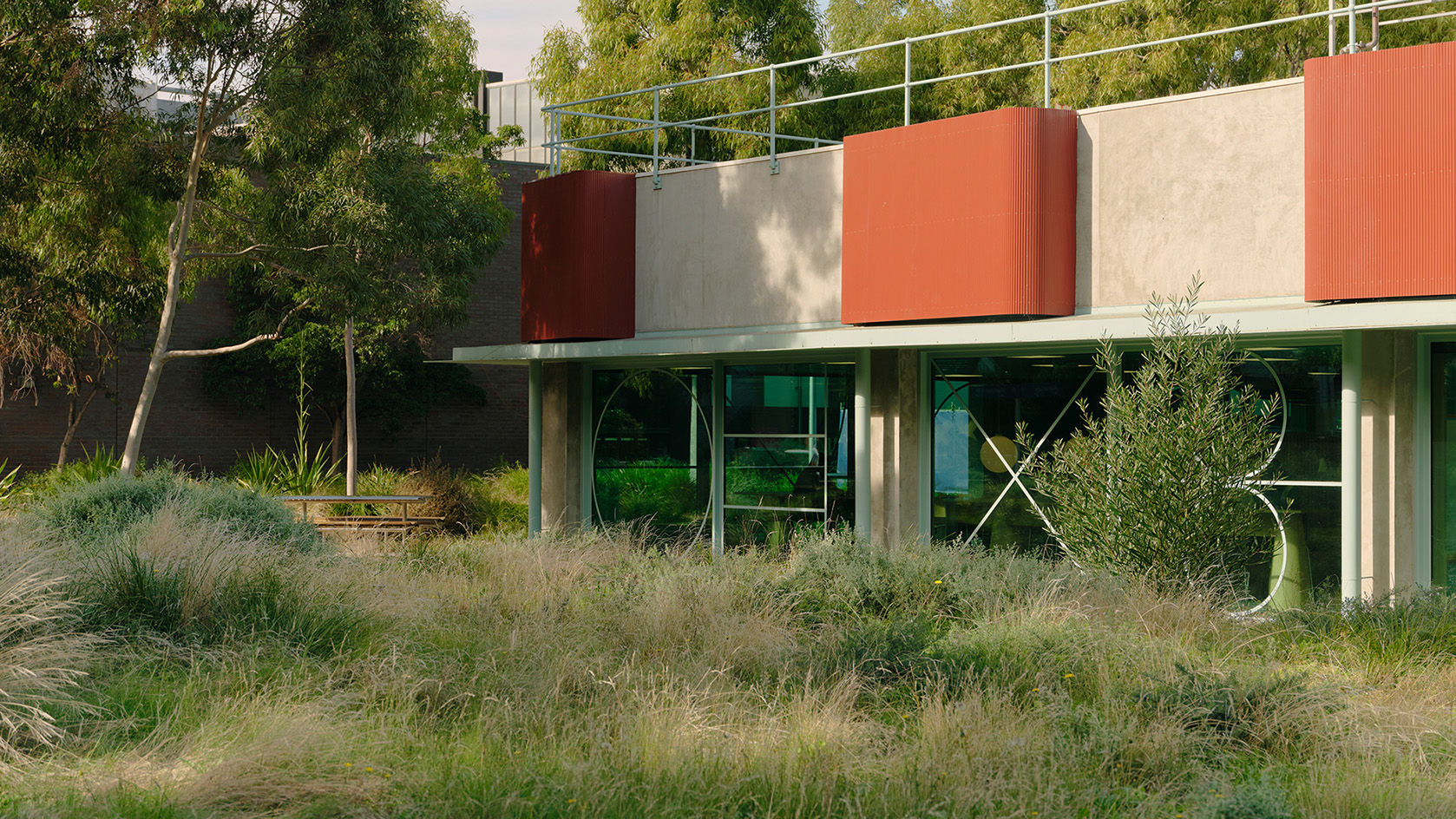 10 landscape architects to know now: the ultimate directory
10 landscape architects to know now: the ultimate directoryThe Wallpaper* 2025 Landscape Architects’ Directory spotlights the world's most exciting studios, each one transforming the environment around us with projects that celebrate nature in design
-
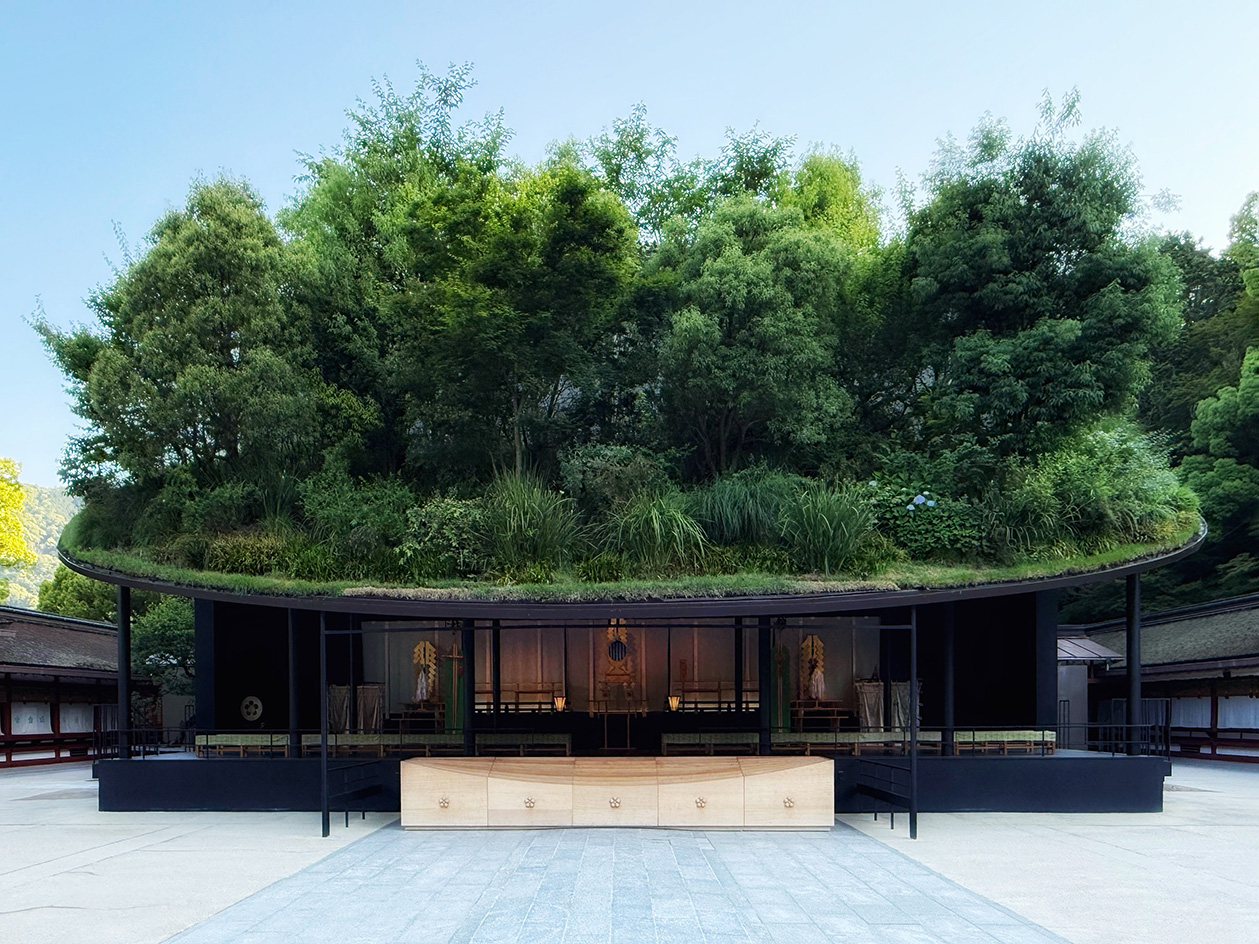 Landscape architect Taichi Saito: ‘I hope to create gentle landscapes that allow people’s hearts to feel at ease’
Landscape architect Taichi Saito: ‘I hope to create gentle landscapes that allow people’s hearts to feel at ease’We meet Taichi Saito and his 'gentle' landscapes, as the Japanese designer discusses his desire for a 'deep and meaningful' connection between humans and the natural world
-
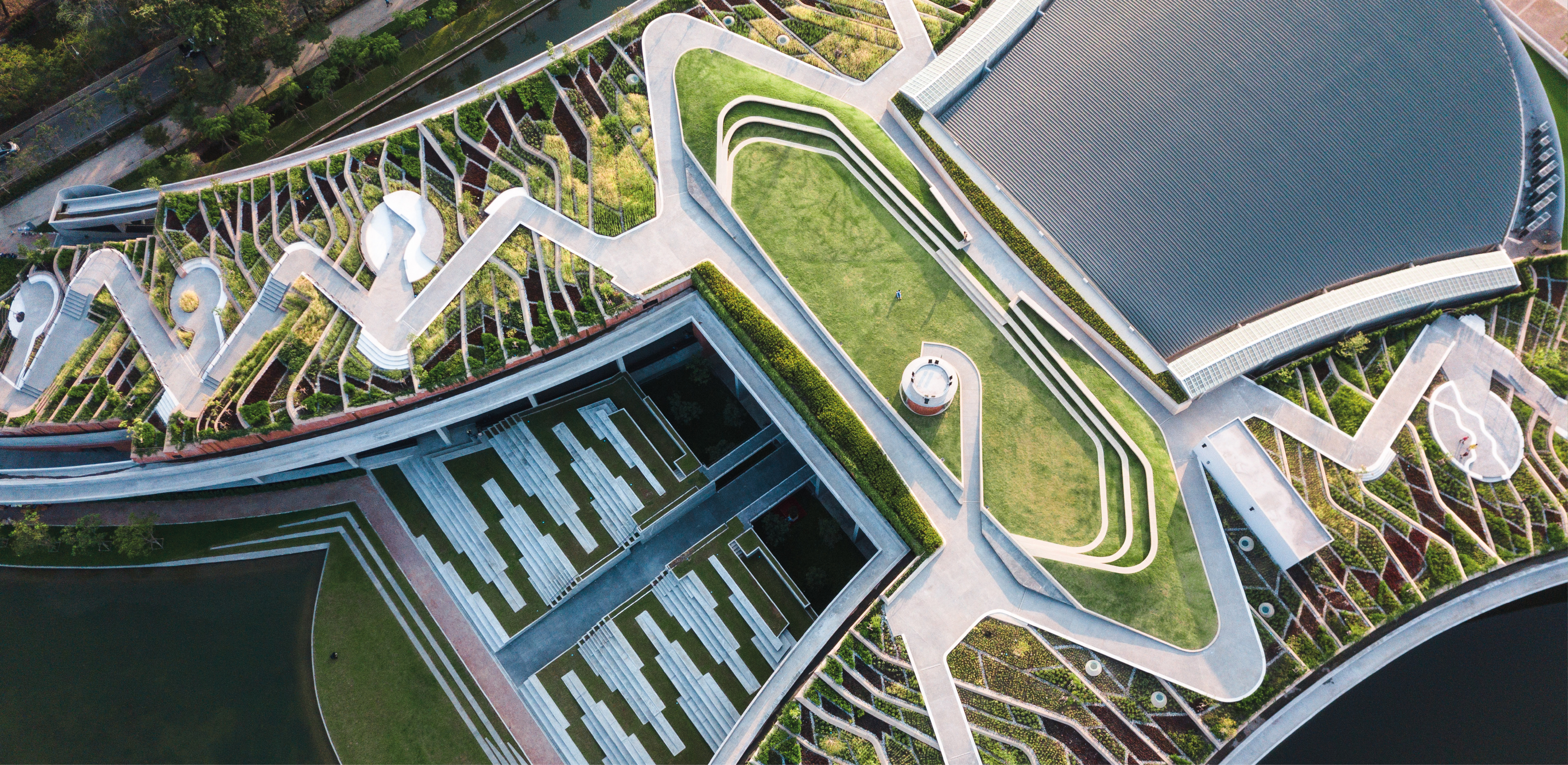 Meet Kotchakorn Voraakhom, the Thai force in landscape architecture
Meet Kotchakorn Voraakhom, the Thai force in landscape architectureAlongside her studio Landprocess and network Porous City, Thai landscape architect Kotchakorn Voraakhom is on a mission to make Bangkok a model of climate resilience